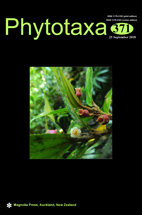Abstract
Both morphological and molecular data have been used to examine the taxonomical status of Carpesium linearibracteatum (Asteraceae). We determined that C. leptophyllum var. linearibracteatum is closer to C. szechuanense and C. triste than to C. longifolium, thus not agreeing with the synonymization of this taxon and C. longifolium. We propose to elevate C. leptophyllum var. linearibracteatum to the species level as C. linearibracteatum.

